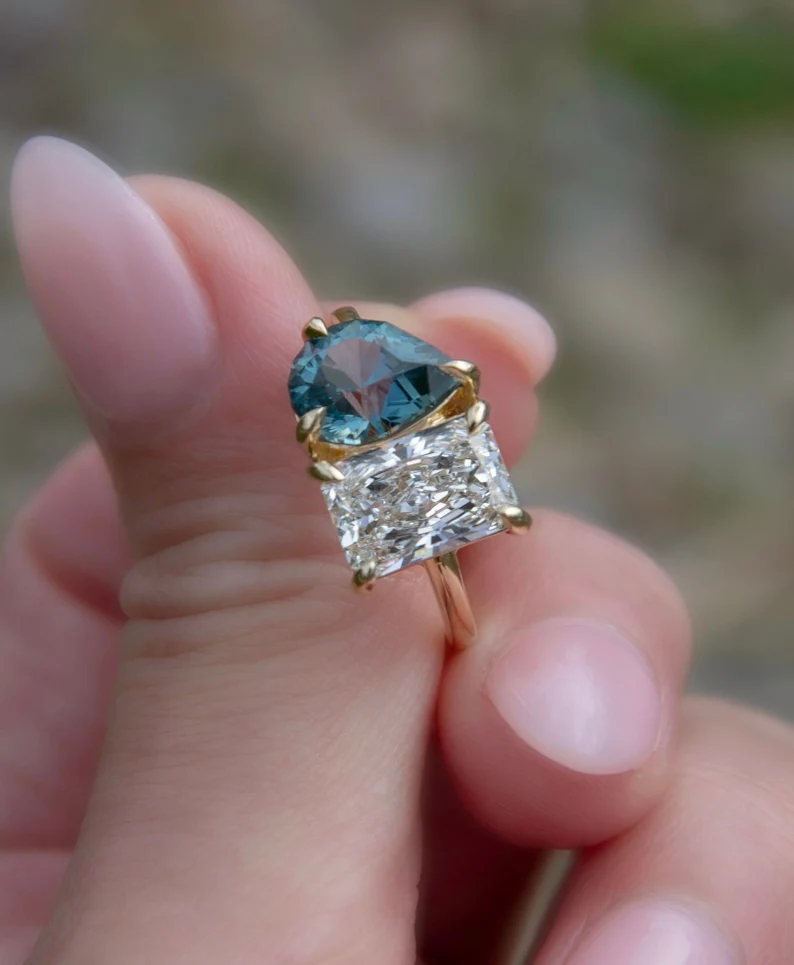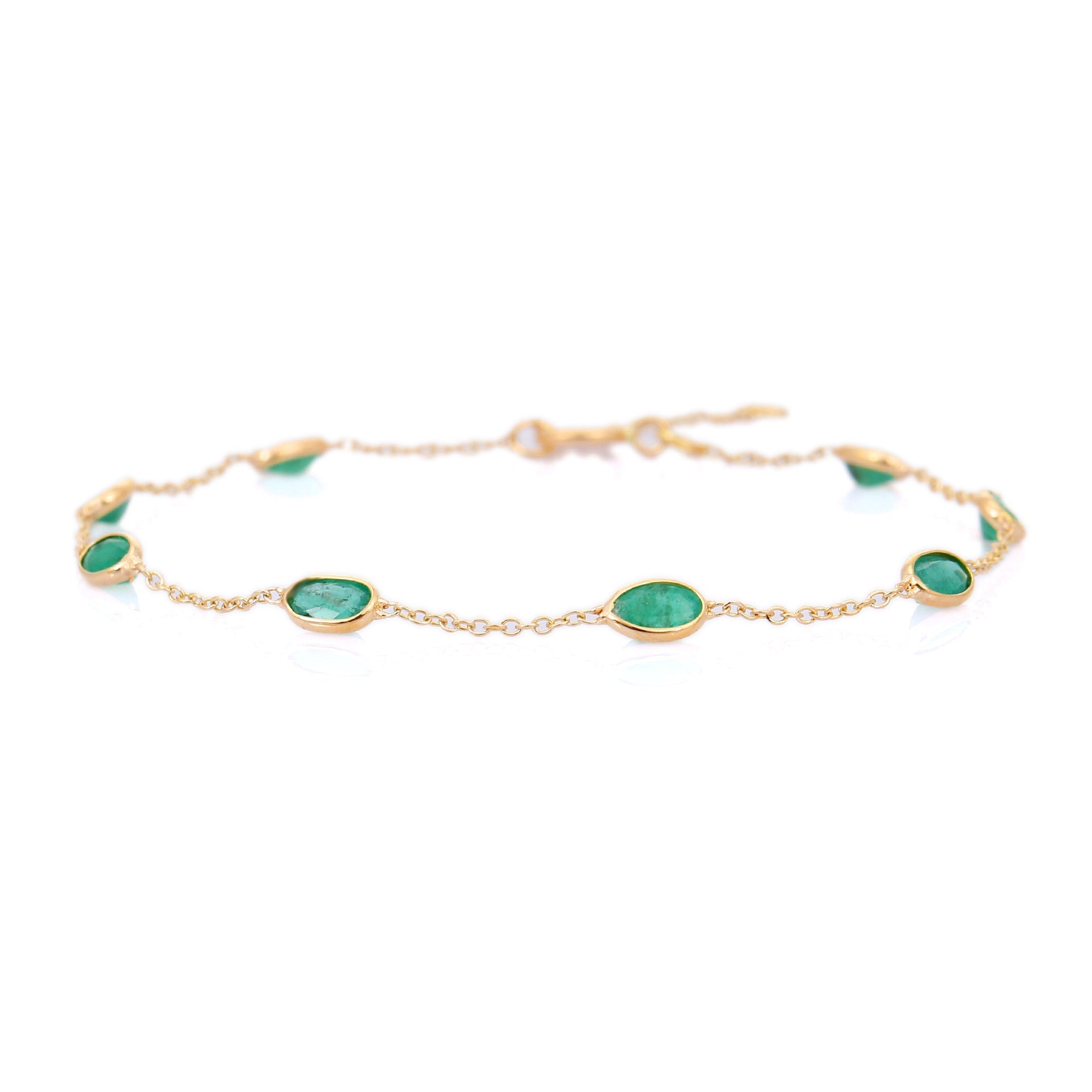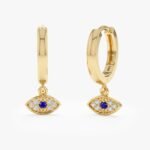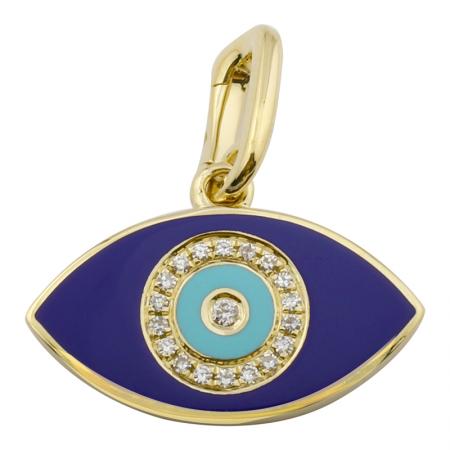Family Birthstone Rings: How to Avoid the Kindergarten Color Wheel

Family birthstone rings are sentimental and personal. But many end up looking like a kindergarten color wheel: bright, clashing, and visually noisy. The problem is not the stones — it’s the design choices. This guide shows clear, practical ways to design or choose a family birthstone ring that reads as elegant and intentional, not juvenile. Expect specific sizes, metal suggestions, hardness notes, and ready-made layouts you can use with a jeweler.
Why many birthstone rings look wrong
Designers and customers make three common mistakes:
- Too many saturated colors at equal scale. When every stone is the same size and brightness, the eye has nowhere to rest. That creates a chaotic feeling.
- Random metal and setting choices. Mixing bezels, prongs, yellow gold and white metal amplifies the mismatch. A consistent setting style ties elements together.
- Ignoring contrast and skin tone. High-saturation gems can clash with skin undertone and with each other. That makes the ring look “loud” rather than refined.
Design principles to avoid the color wheel
Follow these principles to make multiple colors read as a cohesive piece.
- Limit the palette. Use 1–3 distinct colors or shades. More than three requires strict unifying elements (same cut, metal, or a neutral anchor).
- Use an anchor stone. A single, neutral focal stone — diamond, white sapphire, or warm champagne diamond — visually organizes the ring. The anchor reduces color competition.
- Choose a consistent setting style. All bezels or all prongs creates rhythm. Bezels are especially good for small, mixed gems since they provide a clean metal edge that unifies shapes and sizes.
- Group by tone, not by birth month order. Arrange gems by warm vs. cool tones or light-to-dark gradient. That feels intentional. Random arrangements look chaotic.
- Scale deliberately. Make some gems accents and one the focal point. Varying sizes prevents the “equal-weight” effect that screams kindergarten craft.
Practical strategies and examples
Below are design options you can order or ask a jeweler to make. Each includes sizes and why it works.
- Single Focal Gem with Accent Birthstones
– Design: 6–8 mm center stone (0.75–2.0 ct) with three 2–3 mm accent birthstones (0.03–0.10 ct each) on the shoulder.
– Why it works: The center stone anchors the piece. Small accents add meaning without competing. Use bezel settings for accents for a neat look. - Stackable Birthstone Band
– Design: Two to three slim bands, each with a single 3–4 mm bezel-set birthstone (0.15–0.35 ct). Bands in the same metal stack together.
– Why it works: Separating stones across bands avoids color clutter and lets each stone stand out. People can add bands over time. - Gradient or Ombre Band
– Design: Five stones in 3–4 mm sizes arranged light-to-dark (for example, aquamarine → blue sapphire → garnet). All stones set in a continuous bezel channel in 14k rose gold.
– Why it works: A controlled gradient reads like design, not random color. Rose gold warms cool blues into a cohesive palette. - Cluster Signet or Inlay
– Design: Small cabochons (3–5 mm) or colored enamel inlay grouped tightly within a signet face, rimmed by 18k yellow gold.
– Why it works: Tight grouping with a metal border turns many colors into a single graphic element. Cabochons are less flashy and more subtle than brilliant cuts.
Choosing metals and settings
- Metal choice by tone: Yellow gold (14k or 18k) complements warm stones like garnet, citrine, peridot, and yellow sapphire. White gold or platinum (14k white gold is typically 58.3% gold plated with rhodium; platinum is usually 95% Pt) suits cool stones like blue sapphire, aquamarine, and tanzanite.
- Consistency: Use one metal for the whole ring or use metal only as a thin accent. Mixed metal demands stronger design rules to avoid visual clutter.
- Settings: Bezel for small mixed stones: it contains color and protects softer gems. Prongs for a large focal gem to maximize brilliance. Channel or bar settings unify a row of small stones.
Size, cut, and color specifics
- Scale examples: Accent stones: 2–3 mm (0.02–0.10 ct). Focal stone: 6–8 mm (0.75–2.0 ct). These proportions keep accents delicate and the focal stone dominant.
- Cut and color behavior: Faceted brilliant cuts increase perceived sparkle and can brighten darker colors. Cabochons mute the color and reduce the “toy” look. Use cabochons for turquoise, opal, or moonstone to create a softer palette.
- Color decisions: Choose stones with medium tone and moderate saturation. Very vivid stones fight each other. Pale stones read as elegant and blend better when mixed.
Durability and treatments
Birthstones vary widely in hardness (Mohs scale). Pick durable stones for daily wear and protect softer stones with bezels.
- Important Mohs examples: Diamond 10; Sapphire/Corundum 9; Topaz 8; Quartz family (amethyst, citrine) 7; Peridot 6.5–7; Opal 5.5–6.5; Turquoise 5–6.
- Treatments: Heat treatment is common and stable (sapphires, rubies). Diffusion, fracture filling, and surface treatments change care and value. Ask if a stone is treated before setting it in a family ring.
- Practical rule: For daily rings, keep focal stones at Mohs ≥7 whenever possible, or house softer stones behind bezels or in low-profile settings to reduce knocks.
Three ready-made concepts you can give to a jeweler
- Modern Minimal — 14k white gold band, 7 mm white sapphire center (1.25 ct), two 2.5 mm bezel-set birthstones on each shoulder. Clean, balanced, and durable.
- Warm Heirloom — 18k yellow gold signet, cluster of three cabochon birthstones (4 mm) inset, raised gold rim. Muted, vintage, and readable as a single object.
- Stack & Grow — Three identical 2.5 mm bezel bands in 14k rose gold, each with a single birthstone. Wear separately or stacked. Easy to add more bands later.
Care and long-term thinking
- Service plan: Ask about a yearly check for prongs, bezels, and polishing. Rhodium plating on white gold needs re-plating every 1–3 years for consistent color.
- Cleaning: Ultrasonic cleaning is fine for stable gems (sapphire, ruby), but avoid it for opal, turquoise, and treated stones. Use warm soapy water and a soft brush for mixed-stone pieces.
- Insurance: For sentimental, multi-gem pieces, insure for replacement value and note any treatments or unusual stones on the appraisal.
In short: limit the palette, control scale, pick an anchor, and unify metal and setting. These small choices turn a ring from a kindergarten color wheel into a thoughtful heirloom you’ll actually wear.




